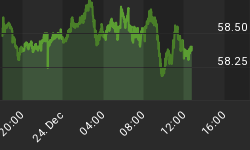The internet has been abuzz for several weeks about an analogue (discovered by Tom DeMark and popularized by Tom McClellan and others) of the bull market top in 1929 and our current market. I haven't touched on Lindsay's best-known model, Three Peaks and a Domed House (3PDh), since my August 19, 2013 commentary. With a fresh look we will discover that today's Dow Industrials index has even more in common with 1929 than seen in the popular analogue. We can also develop a price forecast for the bottom of the new bear market.
Lindsay shared two distinct variations on the standard 3PDh pattern. The first was a variation he referred to as Model 3 which was explained in my August commentary. But there has been an additional development since then.
Lindsay called the other variation a Complex Arrangement. He described this variation as when an additional 3PDh is contained within the First Floor Roof of the larger 3PDh. The entire movement between the low in June 1928 and the high in 1929 was a Complex Domed House; an initial Three Peaks formation followed by a second 3PDh formation contained within the First Floor Roof of the first formation. It forecast a low to the subsequent bear market at 41.75. The eventual low on 7/8/32 was printed at 41.22. The formula for forecasting bear market lows is outlined in chapter six of my book George Lindsay and the Art of Technical Analysis FT Press 2011.
Just like 1929, a five-wave reversal occurred during 2013. This is an important part of any 3PDh pattern and is called the First Floor Roof. But it is also possible to think of the May (I), August (II), and September (III) peaks as part of a Three Peaks pattern. It seems we have an additional 3PDh contained within the First Floor Roof of the larger 3PDh" - a Complex Arrangement.
With the above knowledge, a price target for the bottom of the bear market in the Dow Industrials index can be determined; 9,576, a loss of 42%, and a return to the lows of October 2009.
Details can be found in the February Lindsay Report available at SeattleTA. Obtain your copy at SeattleTA.

















